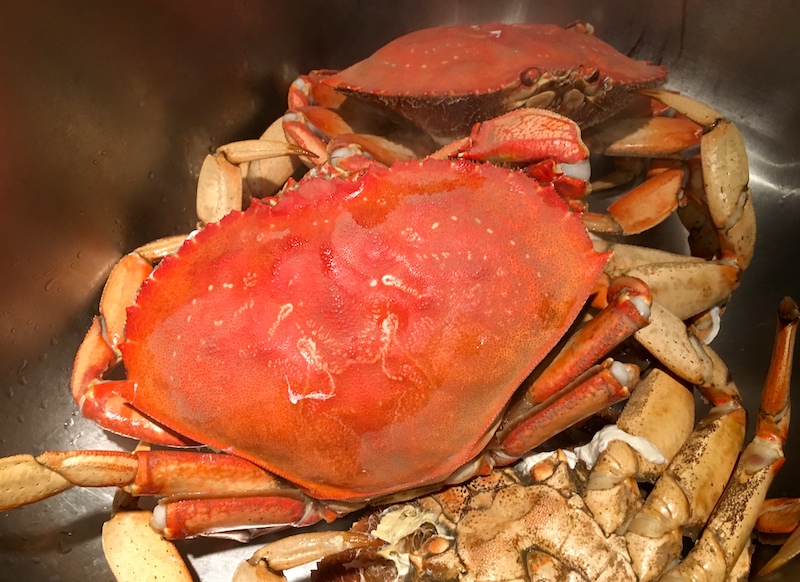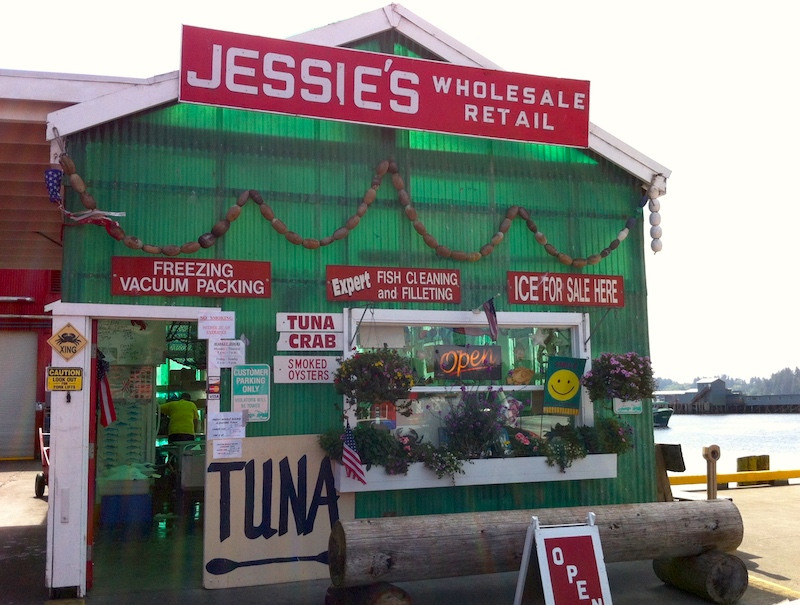
Fresh Inspiration: Gochujang Roasted Albacore and Fried Rice
I don't know about you, but this is the way it goes at our house: I'm browsing through recipes online or reading an article about our local fisheries—it is, after all, part of my job—and I think, "Gosh darn it, we need to have more fish in our diet."
Then I close the window or finish the article and forget about it.
But this summer we've invested in a CSA subscription from Stoneboat Farm, which means I will be picking up our share every Saturday morning for 23 weeks at its booth at the Hollywood Farmers Market. And that just happens to be across the aisle from the beautiful display at Linda Brand Crab which, in addition to the eponymous crab in its name, usually has a plethora of other local, fresh-out-of-the-water fish and shellfish on offer.

After I picked up our share this past weekend, I glanced across the aisle and noticed some beautiful rosy albacore tuna loins for a very reasonable price. So I picked up a small-ish, three-quarter pound piece and stashed it in the shopping bag with my vegetables, figuring I'd come up with something for dinner that night.
As usual the afternoon got involved, this time with a trip to the garden store for compost, digging it in to amend the dead soil in our raised beds, planting the tomatoes, peppers and ground cherries from Alice at Log House Plants, and suddenly the clock somehow said it was time to make dinner.
Oops. The albacore!
A quick scan of the veg bin—this is where a CSA really comes in handy—made the decision a snap, and with my homemade gochujang and other staples at the ready, I came up with a simple and, it turned out, incredibly delicious solution. Not just a terrific way to supplement a vegetable stir fry, this roasted fish would be great to use with any firm-fleshed fish as a main course with rice and salad, or sliced into cubes it would make a terrific appetizer right out of the oven (or off the grill) this summer.
Plus it makes it easy to fulfill that pledge to include more fish on our table!
Gochujang Roasted Albacore with Vegetable Fried Rice
For the marinade:
3/4 lb. albacore loin, sliced in 1" thick sections
3 garlic cloves, finely minced or pressed in a garlic press
2 Tbsp. gochujang
1 Tbsp. miso (I'm addicted to locally made Jorinji miso)
1 1/2 tsp. brown sugar
1 Tbsp. water to thin
For the fried rice:
4 c. leftover cooked rice*
4 c. vegetables, chopped in bite-sized pieces (I used cabbage, carrots and zucchini)
2 Tbsp. vegetable oil
1 onion, chopped in 1/4-inch dice
3 garlic cloves, minced
1 Tbsp. ginger, peeled and grated
2 Tbsp. gochujang
2 Tbsp. miso
1 Tbsp. fish sauce
1Tbsp. toasted sesame oil
1 bunch green onions, sliced into 1" lengths
1/2 tsp. red pepper flakes (optional)
1 Tbsp. toasted sesame seeds (optional)
Preheat oven to 400°.
Place a sheet of parchment paper in a roasting pan.
Chop vegetables for stir fry.
In a small mixing bowl, stir together the marinade ingredients. Thickly coat each piece of fish in the marinade mixture and place them on the parchment paper in the roasting pan. Reserve any remaining marinade for the fried rice.
Place roasting pan in oven, roasting for 10 minutes. Remove from oven and set aside while you cook the fried rice.
In a deep sauté pan, heat the oil over medium-high heat until it shimmers. Add the chopped onions and sauté until it starts to become translucent. Add the ginger and garlic to the onions and sauté briefly, then add the gochujang, miso and any remaining gochujang marinade and cook for 1 minute, stirring to keep it from sticking.
Add vegetables starting with the ones that take the longest to cook (like carrots, then zucchini and cabbage) and sauté until crisp-tender. Add pepper flakes, fish sauce, sesame oil and green onions and heat briefly, then add cooked rice.* Cook for at least 5-10 minutes to heat the rice, then season to taste with more fish sauce, miso or sesame oil if it seems bland.
Cut the roasted fish into 1" pieces and place on top of the fried rice. Serve, sprinkling with toasted sesame seeds if desired.
* It's not necessary to have cooked rice on hand—I've made rice just beforehand with no problem. If you need to cook rice, bring 4 c. water to a boil and then add 2 cups long grain or jasmine rice. When it returns to a boil, turn down the heat to low and cook until all the liquid has been absorbed, about 20 minutes. You can cool the rice at this point, or use it hot.
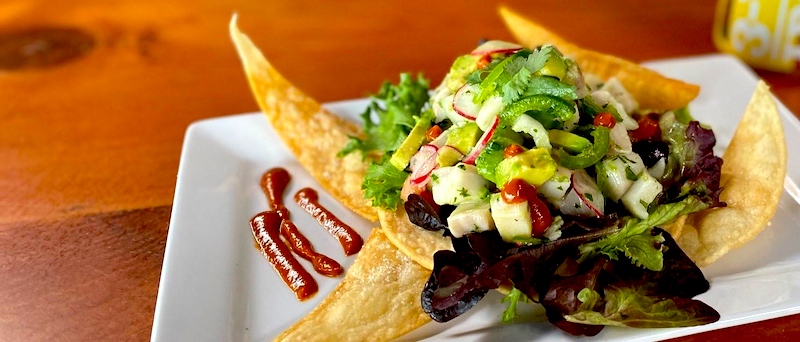
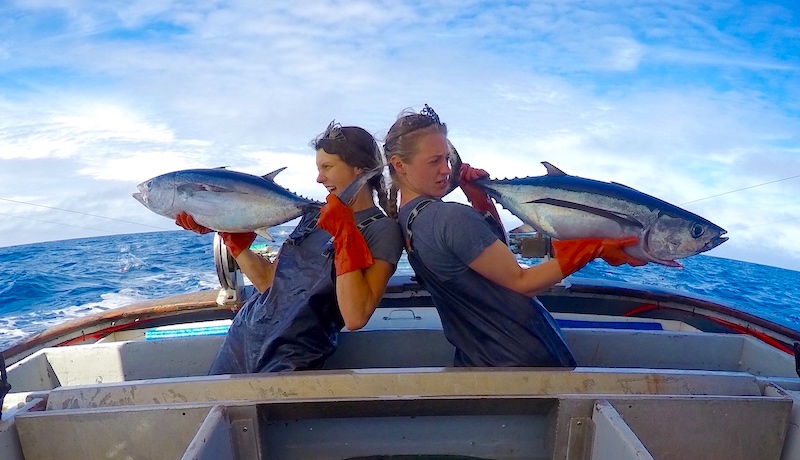
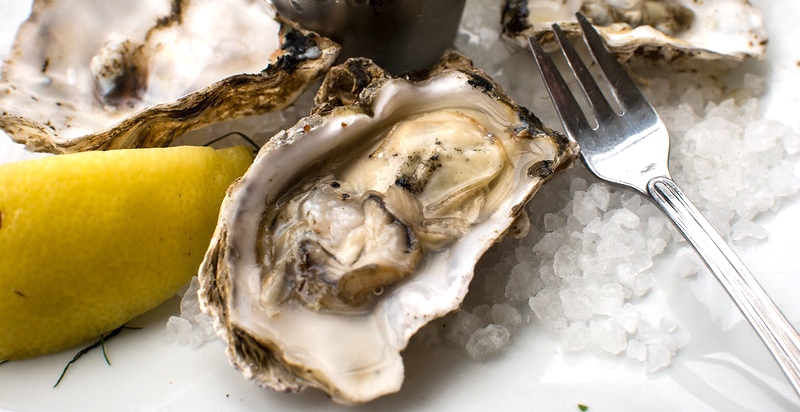

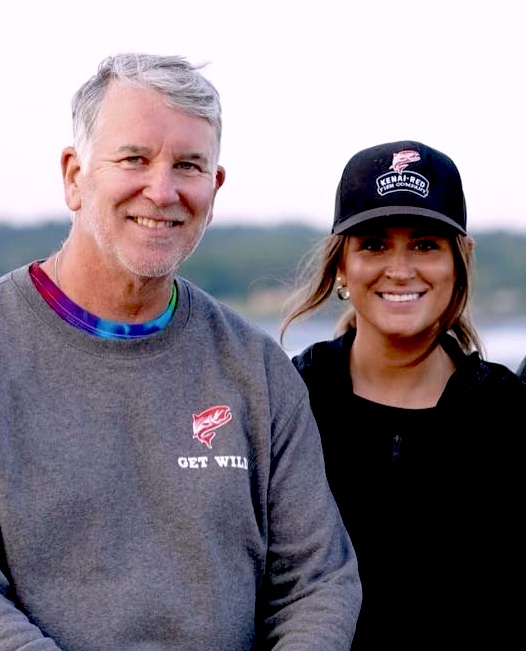
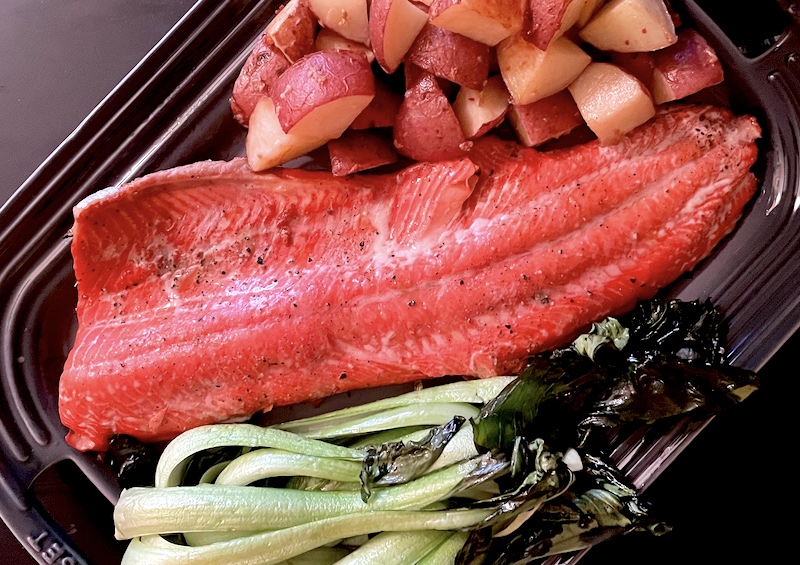
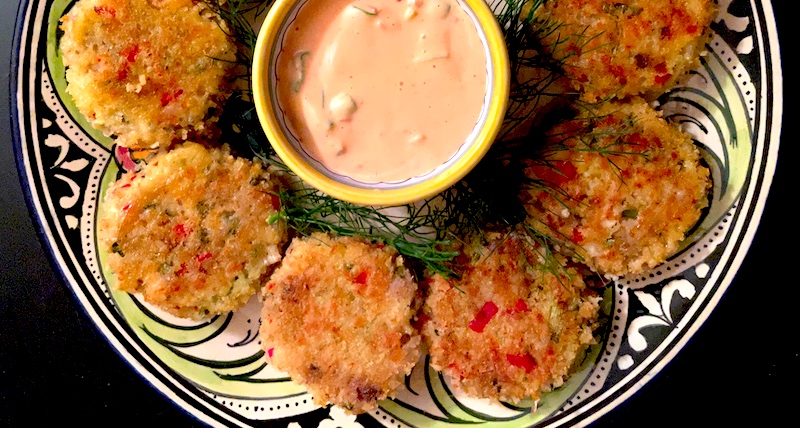
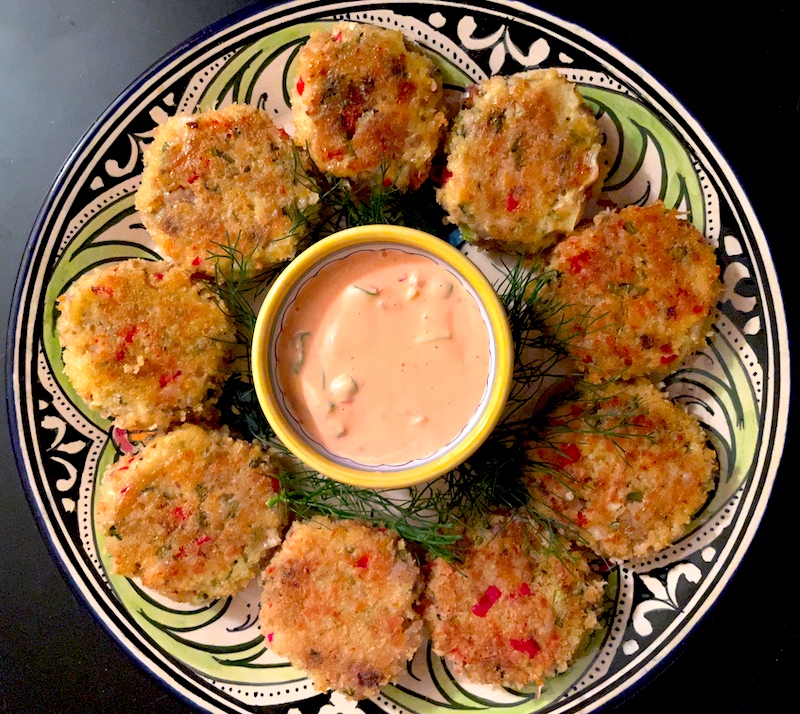 Lately I've found some mighty meaty collars, almost like a fish steak with wings, at
Lately I've found some mighty meaty collars, almost like a fish steak with wings, at 
 There are Nims' recent single-subject seafood books, including
There are Nims' recent single-subject seafood books, including 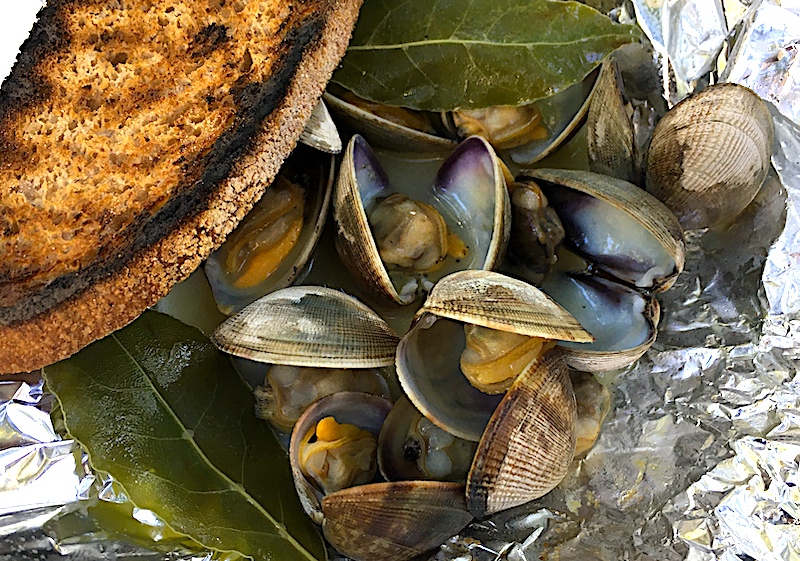 You can meet this culinary wonder woman this weekend at two events in Portland where she's bringing her new book,
You can meet this culinary wonder woman this weekend at two events in Portland where she's bringing her new book, 
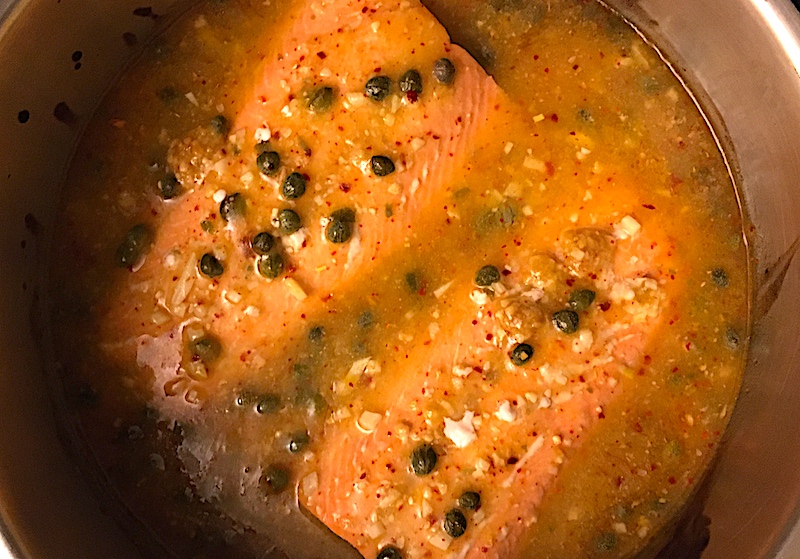 My mother was much more comfortable cooking red meat, what with her upbringing in an Eastern Oregon cattle ranching family. When we did have fish, it was most often from a can—tuna or the dreaded canned salmon, which was unceremoniously dumped in a dish, the indentations of the rings from the can still visible on its surface. Any whole fish tended to be less than absolutely fresh, requiring lots of what was called "doctoring" to cut the fishiness.
My mother was much more comfortable cooking red meat, what with her upbringing in an Eastern Oregon cattle ranching family. When we did have fish, it was most often from a can—tuna or the dreaded canned salmon, which was unceremoniously dumped in a dish, the indentations of the rings from the can still visible on its surface. Any whole fish tended to be less than absolutely fresh, requiring lots of what was called "doctoring" to cut the fishiness.
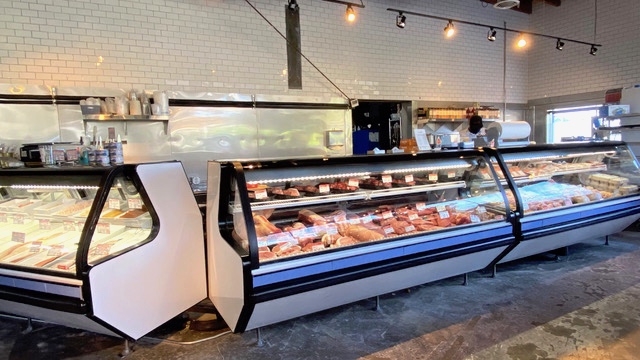 "We’re happy to announce that after many months, the debut of their full-service meat and seafood counter at Providore is here," said Kaie Wellman, co-owner of Providore along with her husband, Kevin de Garmo and their business partner, Bruce Silverman. "The 'protein' corner of the store has been transformed into a mecca for those who want to work closely with their local butcher and fishmonger to source top-quality, small-farmed meat and sustainably caught seafood."
"We’re happy to announce that after many months, the debut of their full-service meat and seafood counter at Providore is here," said Kaie Wellman, co-owner of Providore along with her husband, Kevin de Garmo and their business partner, Bruce Silverman. "The 'protein' corner of the store has been transformed into a mecca for those who want to work closely with their local butcher and fishmonger to source top-quality, small-farmed meat and sustainably caught seafood."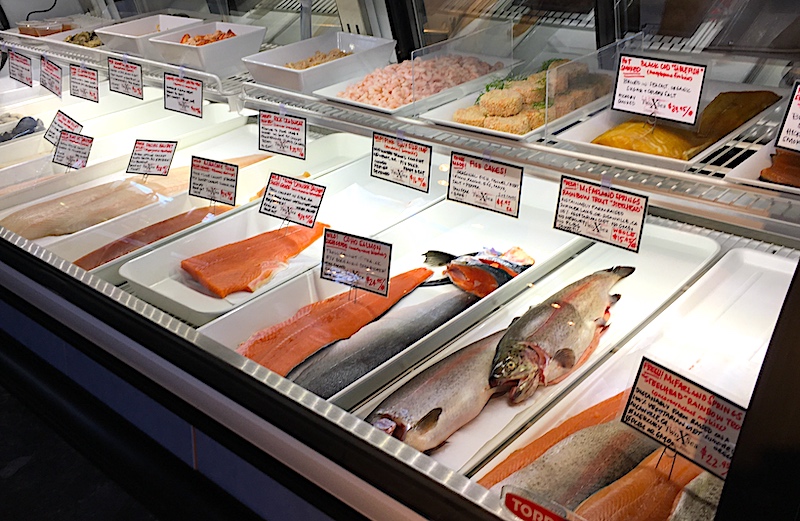 A huge problem with our food system is that shoppers are often misled about what they're buying. Tilapia, a common farmed fish, is mislabeled as more expensive snapper—
A huge problem with our food system is that shoppers are often misled about what they're buying. Tilapia, a common farmed fish, is mislabeled as more expensive snapper—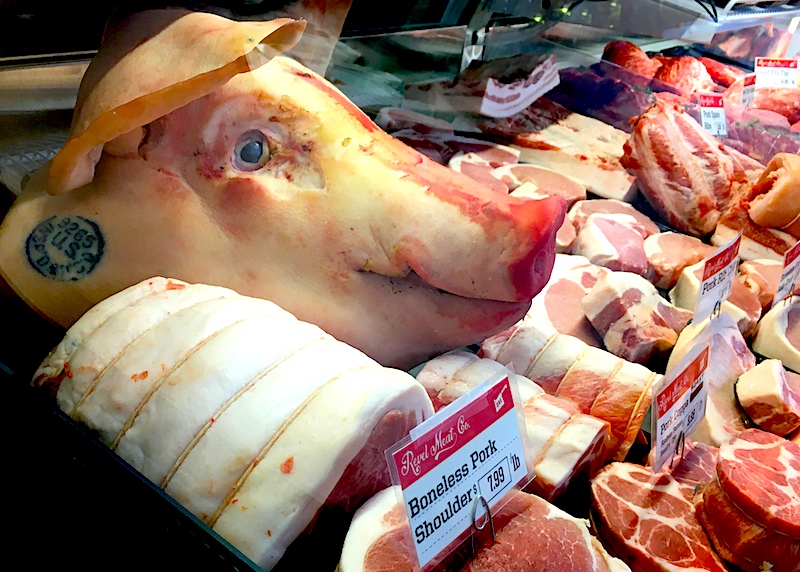
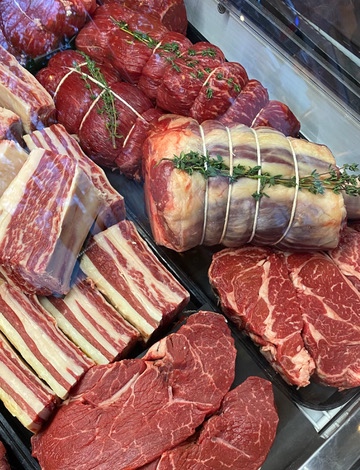 Calling Providore's partnership with these two purveyors a "perfect marriage," Wellman added that "their sustainability standards are unmatched anywhere. These guys walk their talk."
Calling Providore's partnership with these two purveyors a "perfect marriage," Wellman added that "their sustainability standards are unmatched anywhere. These guys walk their talk."
